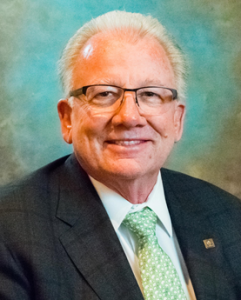Following a somewhat surprise ruling by the California Third District Court of Appeal, which affirmed the California Fish and Game Commission’s authority to determine if insects such as four bumblebee species can be protected under the California Endangered Species Act (CESA), a coalition of seven agricultural organizations including the California Cotton Ginners and Growers Association (CCGGA) and the Western Agricultural Processors Association (WAPA) have filed a petition for review to the California Supreme Court asking them to hear this case. The Appeals Court’s new order reverses a previous trial court decision and opens the flood gates to include many potential insect species under CESA. This process began in 2018 when some public interest groups petitioned the Commission to list four species of bumblebees as endangered. The Commission accepted the petition and began the process to list the 4 species as candidate species. At that point, seven agricultural organizations, including CCGGA and WAPA, challenged the decision, and the California Superior Court agreed. In response, the Commission and public interest groups filed an appeal with the Third District Court of Appeal. Unfortunately, the Third District found that the legislature intended the definition of fish to include insects (invertebrates). Feeling confident in the agricultural groups’ position, the coalition decided to move forward with filing the petition with the hopes the case will be heard by the California Supreme Court. Stay tuned!
NEWS & ISSUES
Association Testifies Before California Department of Insurance
Association President/CEO Roger Isom testified today before the California Department of Insurance (CDI) on the issue of expanding the FAIR Program for insurance. The FAIR program is the “insurance of last resort” when operations cannot get coverage anywhere else. In recent years, many facilities have been unable to get insurance coverage for their property or stock insurance. This primarily a result of the historic wildfires in California chasing insurance carriers away from California, as well as losses in the agricultural industry as well. It has left many operations with limited coverage pieced together with multiple policies or in some cases without coverage on part or all of their property. This is unacceptable, and the Association has been working closely with CDI to find solutions to this crippling dilemma. As a result, State Insurance Commissioner worked with the FAIR Program to increase the commercial limit from $3 million to over $8 million in overall coverage. In his testimony today, Isom asked the Commissioner to seek increases as high as $20 million. Obviously, this does would not cover all of the property and stock that many our members may have, it would be a significant increase and would help in the interim until more carriers come back to the California marketplace. The Association continues to put pressure on CDI and find solutions to help our members.
USDA Seeking Proposals for CIG Grants
The U.S. Department of Agriculture’s Natural Resources Conservation Service (NRCS) in California is seeking proposals through June 1 for On-Farm Conservation Innovation Trials (On-Farm Trials). On-Farm Trials, part of the agency’s Conservation Innovation Grant (CIG) program, feature collaboration between NRCS and partners to implement on-the-ground conservation activities and then evaluate their impact. Incentive payments are provided to producers to offset the risk of implementing innovative approaches. “USDA is a leader in using the latest science, research and conservation tools to reduce the impacts of climate change,” said Carlos Suarez, NRCS State Conservationist in California. “We’re doing our part in helping America’s farmers and ranchers conserve the natural resources we all depend on, like clean air and water, while supporting the health and resiliency of their operations for the future. Conservation Innovations Grants are an important tool in the development of new and innovative technologies and systems to support agriculture and conservation.” California CIG application packages are due via Grants.gov by 11:59 pm Pacific Standard Time (PST) on June 1, 2022. The agency anticipates making selections by June 30, 2022 and expects to execute awards by August 19, 2022. FY 2022 USDA-NRCS Conservation Innovation Grants competition for California presentation will be available April 27, 2022. A total of up to $400,000 is available for the California CIG competition in FY 2022. Projects may be between one and three years in duration, with the maximum award amount for a single award in FY 2022 to be $150,000. This program harnesses the expertise, resources and capacity of partner organizations nationwide to help NRCS boost natural resource conservation on private lands and support climate smart agriculture. A critical element of each On-Farm Trials project is the project evaluation. Partners must propose robust scientific approaches for their projects, resulting in data and analyses of the environmental, financial and, to the extent possible, social impacts of the trials. The CIG state component emphasizes projects that benefit a limited geographical area.
How to Apply
To apply, follow the requirements in the California CIG Announcement:
- Applications MUST be submitted electronically through Grants.gov.
- Submissions must be received by the submission due date of June 1, 2022, by 11:59 PM Pacific Standard Time (PST).
- See section D of the CIG Notice of Funding Opportunity for more information regarding how to submit an application.
- Required documents and instructions are available on Grants.gov.
New California Water Storage Project Moves One Step Closer to Reality
The United States Environmental Protection Agency (US EPA) formally invited the Sites Project Authority to apply for a $2.2 billion low-interest loan through the Water Infrastructure Finance and Innovation Act (WIFIA), which would bring the project significantly closer to construction and completion. A loan through the WIFIA program could dramatically reduce the costs to participants, making it more affordable for cities, farms, and resource managers to have access to more water in dry years. Sites Reservoir is significant for California and the nation, and a substantial loan through the WIFIA program will help us realize the many environmental and water supply benefits of this project. Sites Reservoir is a beneficiary pays project, which means that the loan will be repaid by project participants. “The significance of this opportunity cannot be overstated,” said Fritz Durst, chairman of the Sites Project Authority. “We thank our federal partners and the Biden Administration for supporting Sites Reservoir in such a meaningful way.”
Established by the Water Infrastructure Finance and Innovation Act of 2014, the WIFIA program is a federal loan and guarantee program administered by the US EPA. WIFIA’s aim is to accelerate investment in the nation’s water infrastructure by providing long-term, low-cost federal loans for regionally and nationally significant projects. The Sites Project Authority submitted a letter of intent to apply in July 2021. WIFIA funding helps finance drought resiliency projects as well as clean water and safe drinking water infrastructure projects across the United States. After a robust statutorily required review process, the WIFIA Selection Committee selected Sites Reservoir to apply for a loan. “For Sites Reservoir to be built – bringing substantial and critical environmental benefits to California – it has to be affordable for our participants. This loan can get us there,” added Durst. Sites Reservoir is an off-stream water storage facility that will create resiliency against the impacts of climate change. The reservoir does not dam a major river system and would not block fish migration or spawning. Sites Reservoir captures and stores stormwater flows from the Sacramento River —after all other water rights and regulatory requirements are met—for release primarily in dry and critical years for environmental use and for California communities, farms, and businesses when it is so desperately needed.
Association Brings In DWR Deputy Directory Overseeing SGMA
The Association hosted a meeting with Department of Water Resources (DWR) Deputy Director, Paul Gosselin, who oversees the Sustainable Groundwater Management Act (SGMA). The meeting included various Ag Associations, County Farm Bureau’s, SJV Water Blueprint members, Growers and other interested stakeholders. Deputy Director Gosselin heard directly from the group about the devastating effects of SGMA not only to agriculture but also to farm workers, disadvantaged communities, the San Joaquin Valley and the entire state of California. Gosselin provided a SGMA update to the group and discussed the different stages of Groundwater sustainability agencies (GSA)’s groundwater sustainability plans (GSP’s). The San Joaquin Valley Water Blueprint discussed its’s efforts related to SGMA. One of the action items coming out of this meeting was the idea to pull together a broader and larger meeting to include legislators.
What does Cotton Acreage Look Like for California in 2022?
With cotton prices where they are today, it comes as no surprise to see an increase in cotton acreage for 2022. Unfortunately, another year of drought will severely limit the amount of acreage that gets planted this year. As of today, California cotton growers are only increasing their plantings this year by approximately 10% despite record cotton prices. Cotton growers planted approximately 120,000 total acres in 2021 and are looking to plant 132,000 acres in 2022.
According to the preliminary planting intentions survey conducted by the California Cotton Ginners and Growers Association this month, the Association is currently estimating approximately only 107,000 acres of pima, 1,600 acres of Hazera and about 24,000 acres of upland statewide for the 2022 cotton season plus or minus 10%. This survey is based on surveys from all of the gins in California and things could change when planting is actually completed and final field surveys are completed by CDFA. If it plays out, it will represent a 26% increase in pima acreage and a 31% decrease in upland acreage in California as compared to 2021. Again, this is preliminary, but reflects what all gins are reporting.
Join Us in Lubbock for the Cotton Grower Cotton Achievement Award Luncheon
2021 Honoree: Ted Sheely

March 30, 2022
Doors open 11:30 a.m. Lunch at noon.
Overton Hotel, Lubbock, Texas
Since 1970, Cotton Grower magazine has annually sought to honor an individual who has demonstrated extraordinary commitment, leadership, and innovation to the cotton industry with the 2021 Cotton Grower Cotton Achievement Award.
The 2021 honoree – Ted Sheely of Lemoore, California – is recognized for his ongoing commitment to industry service on behalf of U.S. cotton, farming innovation, and successful strategic planning.
Please RSVP by March 15
CottonGrower.com/RSVP
Questions? Contact:
Beck Barnes
Business Director, Cotton Grower
662.820.1594 | bbarnes@meistermedia.com
Remarks on current cotton
market outlook by
Dr. John Robinson
Professor and Extension Specialist/Cotton Marketing at Texas A&M University
Free 1 Hour Labor Law Webinars
California Cotton Ginners & Growers Association and Western Agricultural Processors Association are scheduling labor law webinars for members beginning March 10, 2022.
Presented by Fisher & Phillips, the webinars will review employer requirements and answer questions. These 1-hour webinars are free to CCGGA & WAPA members and will take place via Zoom, registration required to receive Zoom logistics prior to the session(s).
Cost:
Members – FREE
Non-members – $25.00
Registration details:
Visit our events page www.wapa-events.com, select Labor Law Webinars or contact our offices (559) 455-9272
Zoom link will be emailed prior to the session(s)
ASABE adds Round Cotton Module Cover Testing to Performance Standard
The American Society of Agricultural and Biological Engineers (ASABE) has completed ASABE S615.2, Cotton Module Cover Material Performance. The document is a major revision of S615.1 that adds performance specifications for module covers used on cylindrical modules, which are now the predominant seed-cotton storage method in the US. Module covers are used to protect the cotton following harvest until it reaches the gin. The ASABE standard provides the physical test requirements for material used to manufacture these covers, which are exposed to environmental conditions, such as wind, rain, and ultraviolet radiation (sunlight) and storage degradation. ASABE is recognized worldwide as a standards developing organization for food, agricultural, and biological systems, with more than 280 standards currently in publication. Conformance to ASABE standards is voluntary, except where required by state, provincial, or other governmental requirements, and the documents are developed by consensus in accordance with procedures approved by the American National Standards Institute. For information on this or any other ASABE standard, contact Scott Cedarquist at 269-932-7031, cedarq@asabe.org.
